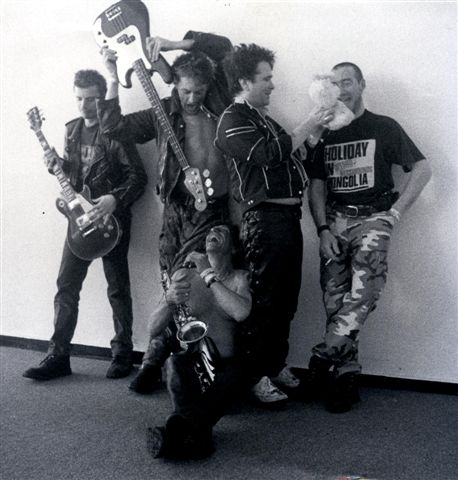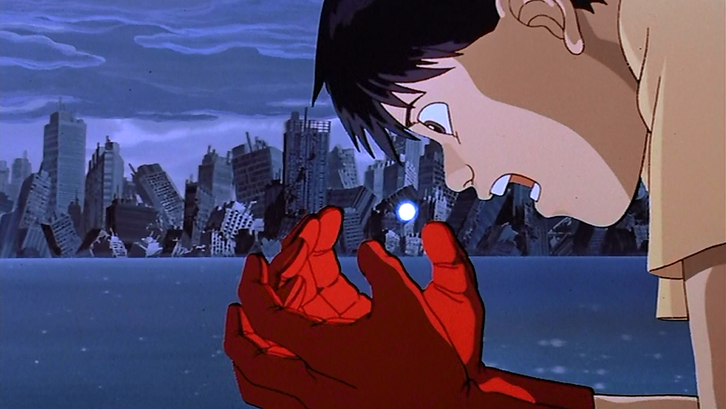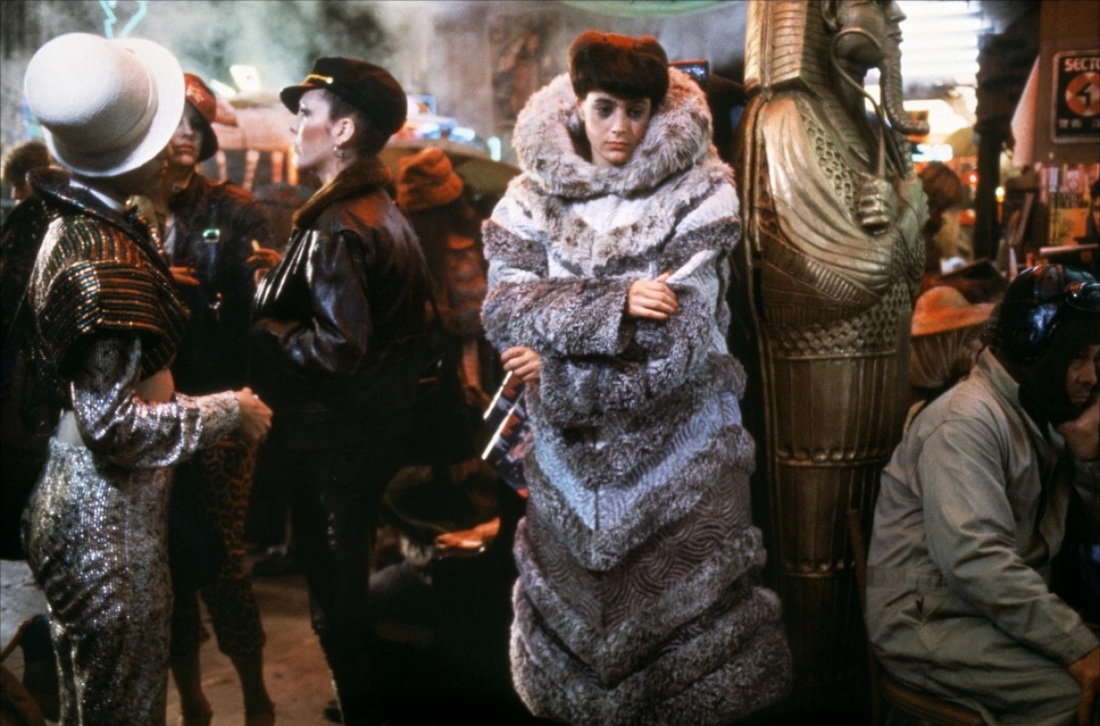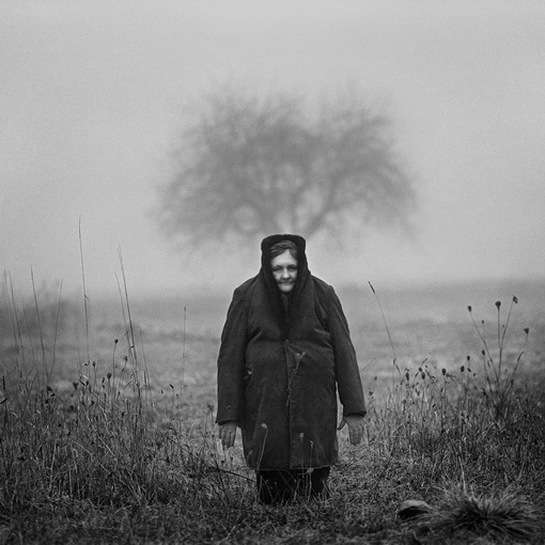|
Extra Life have decided to call it quits. A great shame as they were one of the most unique and exciting bands around, equal parts intellectual technique and savage uproar. They leave a solid catalogue of great work though, all available on Bandcamp. Third - and now sadly last - LP Dream Seeds was released in April of last year. Below is the track Ripped Heart, a personal favourite from the EP of the same name. It defines the band pretty well: complicated arrangements of classical music theory/stadium rock collage that swerve unnervingly quickly from delicate to violent.
0 Comments
Weed and war protest are still distasteful to the upper crust of France, but not enough to scupper the honouring of Bob Dylan. Despite fuss over his past, Dylan is to receive his Legion d'Honneur award today, securing him in the lofty ranks of the drug-free Miles Davis and Stonewall supporter Vladimir Putin as foreigners deemed worthy of French state praise. Dylan was originally proposed the honour on the 50th anniversary of The Freewheelin' Bob Dylan, but there was worry about whether Blowin' in the Wind was a vile ode to peace from pinko scum or merely a fun ditty about meteorological awareness. Anyway, a more important anniversary is that this month marks ten years since the last U.S. Maple album, Purple On Time. To wrap things with a bow, Purple On Time features a great - surprisingly straight - cover of Dylan's Lay Lady Lay. Funny how things work out. "The fucking pubs are fucking dull The fucking clubs are fucking full" Pub punk from Splodgenessabounds about the difficulty of getting them in before the bell. Oi! doesn't get you anywhere, apart from maybe Top of the Pops. Keep it civil. Leaning over with your elbows out on the bar makes you seem pushy, but you don't want a sidler to skip in. Just calmly try and catch the eye. And don't wave your money, for god's sake, it's not the races.
Formed in Peckham, The Splodges supposedly won the Melody Maker band competition in 1976 by appearing naked apart from cardboard boxes on their heads. This track was their debut single, released in 1980 with a parody of the theme for Return of the Saint and Michael Booth's Talking Bum as b-sides. It reached #7 in the charts and is now tragically best known as the basis for the title of a humourless 'sitcom'.
FUNimation release the 25th anniversary edition Blu-Ray/DVD of Katsuhiro Ohtomo's Akira today, a perfect opportunity to celebrate and re-evaluate the classic anime.
Condensing the plot of Otohmo's concurrently ongoing epic manga into a two hour film, the anime proved to be a runaway success and a gateway film for western audiences. The release of Akira in 1988, with the addition of Grave Of The Fireflies and My Neighbour Totoro the same year, marked a new sophistication in Japanese animation and the start of its mainstream success worldwide.
2019: It's been 31 years since Tokyo was reduced to a crater in a sudden flash of light, sparking World War 3. The remains lie as a black hole at the center of the new metropolis, Neo-Tokyo, built on the rubble. The egotistical Kaneda runs the Capsules biker gang, while long-suffering sidekick Tetsuo boils under his inferiority complex. A motorcycle crash after a run-in with an escaped subject of psychic experiments puts Tetsuo in hospital in the custody of the psychic project's leader, Colonel Shikishima, and reveals Tetsuo's own latent psychic powers. Dissident revolutionaries, apocalypse worshipping cultists and a secret government project related to Tokyo's destruction, known as Akira, whirl around the developing emnity between the ever-more powerful Tetsuo and the befuddled Kaneda. Who or what is Akira? Tetsuo seeks answers below Tokyo as he evolves increasingly god-like powers that eventually spiral out of control. The production techniques in Akira were ground-breaking for Japanese animation at the time, making full use of the mammoth $11mill budget and staff of 70 animators. Character's expressions and mouth movements were drawn to pre-scored dialogue, advanced multi-layered perspective was used for depth and sense of scale, and an expanded use of dark colours created authentic night scenes. Standard outlandish anime style was out, as was traditional heroic storytelling, in favour of darker and more realistic art, narrative and characterisation. Akira exploits Japan's specific societal concerns with overcrowding, youth alienation and generational disconnection from the wartime past, but also universal themes of technophobia, adolescence and the cyclical nature of war. Power is the core of the film; who has it and who wants to take it. Japan knows better than any country about the perils of technology and messiah complexes, and fear of power and its seduction pervades the film. Within the tangled web of themes and symbols in Akira is a confrontational allegory of generations, split by World War 2 and the nuclear bomb, that don't understand one another. However, all this grand subject matter in the film is in service to what is, essentially, a fast-paced action blockbuster with a moving story of rivalry and maturation.
Alongside the animation, Akira's soundtrack is another remarkable component. The hundredfold membership musical collective Geinoh Yamashirogumi were commissioned by Ohtomo following the success of their album Ecophony Rinne, which displayed a unique mix of traditional Japanese music and enterprising electronics. Led by artist/scientist Tsutomu Ōhashi, the collective recorded modular pieces based on various themes over six months, without the benefit of scoring to finished scenes. The influences were wide: Nogaku theatre, Buddhist chants, Christian choral, Balinese gamelan, progressive rock. The effect is a startlingly turbulent mix of ancient spiritualism battling modernity, which corresponds perfectly with the themes of the film. The freedom from the limitations of budget, time and scene-matching served the compositions, allowing focus on development of mood over pacing for the film's sequences.
Akira is a frequently baffling, convoluted film that suffers from the same frayed chaos as its setting. Despite this, the film holds together and the rambling strangeness and density are part of its enduring charm.
I think a great double-bill partner for Akira would be Shane Carruth's Upstream Color. Biological manipulation, bewildering puzzle narratives and great soundtracks. Watch them early and you can spend the rest of the night trying to work out what the hell both of them are really about.
For more Katsuhiro Ohtomo animation, watch Construction Suspension Order and Memories, for which Ohtomo directed the section Magnetic Rose.
Not to be confused with the Canterbury scene prog band of the same name. Relaxing, cheerful UK folktronica in the vein of I Am Robot and Proud. Hypnotic flow of skittering beats over mellow loops of harps, soft piano, strings, bells and other dulcet tones. The whole Flicker and Fade EP is pay-what-you-want at Bandcamp. The best promotion of the continuing power of punk is how much Ayatollahs hate it. Shaytan has all the best tunes. ***UPDATE 12/11/13*** Two members of Yellow Dogs, drummer Arash Farazmand and guitarist Soroush Farazmand, were tragically killed in a shooting on the morning of the 11th. If you like the band then perhaps, in honour of those two, you would like to learn more about or support one of the groups that help Iranian refugees, political prisoners and/or fight for human rights reform in Iran, such as the ICHRI, Amnesty and the CDHR.
Bahman Ghobadi's drama No One Knows About Persian Cats is set in the underground rock scene of Tehran. The underground scene in Iran is no joke, prison and the lash can be expected for your troubles. Music as a whole isn't considered very favourably within the official strictures of the Islamic Republic, western music less so, and punk is essentially an enemy of the state. "Although music is halal, promoting and teaching it is not compatible with the highest values of the sacred regime of the Islamic Republic," said the Supreme Killjoy, Ayatollah Ali Khamenei, in 2010. This was in response to a question about classical Persian music lessons from a devout follower, the Ayatollah's answer to those looking to express themselves through rock music is decidedly less gracious. On August 16th, police raided the concert of Iranian metal band Dawn of Rage and arrested 200 fans, stripping some to look for "satanic symbols", despite permits being sought and received through the Ministry of Culture. Many bands that make music outside of the approved system, such as The Yellow Dogs featured in the film, are forced to flee or accept the full force of the government oppression when their popularity makes continuing underground impossible. However, the sheer mass of internet savvy youth and illegal satellite dishes in Iran mean they still have an impact. Before Khamenei, at the birth of the Islamic Revolution in 1979, Ayatollah Ruhollah Khomeini declared music to be "a drug" and proceeded to ban all types of music, instruments and music schools. "We must completely eliminate [music]," Khomeini told the Kayhan newspaper after the revolution. Despite the Ayatollah's outrage, the Qurān does not categorically condemn music. Khomeini's position was a traditionalist, reactionary interpretation based largely on the hadith. Often the conservative rulebook would dip into the bizarre, such as the decree that made chess haram until 1988; the pollution of idols, see? In the 1980's, the Ministry of Culture and Islamic Guidance (MCIG) was charged with overseeing the production of music, first producing firm guidelines and then consolidating and unifying regulation and censorship in 1987 in line with post-revolutionary values. Musical instruments were only deemed acceptable for sale in 1989, when Khomeini relented on some of his absurd decrees shortly before his death. Despite gradual loosening of the rules for Persian traditional, western classical and pop music since then, only 20 percent of the music produced in Iran today is met by approval from the MCIG. Women in particular struggle under ridiculous rules; female singers can largely only accompany a male, not be the the lead or sing solo.  Created by French artist Nicolas Maigret and American software developer Brendan Howell, The Pirate Cinema looks and sounds like something has gone terribly wrong. An installation of free-wheeling glitches and staccato bursts of pop songs and clipped dialogue are rendered in real-time on three screens simultaneously. An automated system downloads the most viewed torrents worldwide and the data of the fragmented media is projected onto the screens. The installation was featured at Liverpool's Abandon Normal Devices Festival in October. Maigret makes immersive works that delve into the fragmented nature and geography found in the wilds of the internet. Glitch art is best when produced as commentary on the electronic age, rather than the ubiquitous use today of mere aesthetic, and Maigret's display of emergent patterns in non-random selection of random data is an interesting example. With today's neverending revelations of NSA and GCHQ mass-surveillance and data-hoovering, this piece sparks interesting thoughts outside of the obvious topic of piracy. For their 5-year anniversary, Mexican Summer are releasing a limited 1000-print book/vinyl package with contributions from their roster. Contained within, this track by Brooklyn's R&B gem Autre Ne Veut and Austrian master of treated guitar noise Christian Fennesz. All I have to say in response to this is: collaborative album, please!
Guise magazine published a piece by Sarah Jennifer Heeley about Blade Runner's noir-influenced costume design. Blade Runner is still the pinnacle of sci-fi art and design for me, and marks the high point of a great year of sci-fi cinema. If you doubt, consider this list: E.T., Tron, Videodrome, Mad Max 2, Star Trek II and The Thing; every film excelled at some aspect of cinematic design.
Each unit in Blade Runner was clearly working in some kind of perfected tandem. I can't even consider a costume, prop or set from the film without imagining it as part of the whole scene. More impressive is how the design hasn't suffered much parody after all these years, unlike Return of the Jedi from the following year, even with the joke-baiting noir genre as its baseline. Still all of a piece within its own universe when watched today, the pathetic fallacy, existential angst, lighting and characterisation are all referential but never stand in front of the film itself. Other films have followed, such as Dark City, The Thirteenth Floor and Gattaca, but those films suffered from what Blade Runner did not, self-conscious reverence. For other great films with noir-influenced design in a sci-fi universe check out the godfather of the genre, Godard's Alphaville from 1965, or Lars Von Trier's 1984 film The Element of Crime. Attachment to nature in the agrarian community of the Karczebs of Podlachia, east Poland/west Belarus, is the subject of the photobook Karczeby, shortlisted for the 2013 Paris Photo Aperture Photobook awards. Panczuk says that the word Karczeb is also used to describe "what remains after a tree has been cut down", and his representation explores both the harsh reality and the levity of a contrarian rural life in post-Soviet Poland. The B&W photography lies in my favourite space, between documentary and stagecraft, visualising the community as one with nature in eccentric ways, recalling the surreal literalisation of Giuseppe Arcimboldo's paintings. Written accounts of folktales and day-to-day family life by Karczeb member Kazimierz Kusznierow are presented in between the full-page photos. The beautiful book, designed by Ania Nalecka, can be purchased here
Karczeby is shortlisted alongside the forgotten and found of the historical photobook The Black Photo Album, by Santu Mofokeng. If you're feeling in the naturalist mood, watch the wonderful Canadian watercolour animation The Man Who Planted Trees from 1987. You'll probably want to go out a cultivate a forest yourself after this but, unlike Bouffier, you'll have to ask the council for permission first. |
Archives
November 2023
Categories
All
LinksWriting
Art & Design Science Music Film All contributions by Kieran Gosney unless otherwise stated.
© Kieran Gosney and kierangosney.com, 2013. Unauthorized use and/or duplication of this material without express and written permission from this blog’s author and/or owner is strictly prohibited. Excerpts and links may be used, provided that full and clear credit is given to Kieran Gosney and kierangosney.com with appropriate and specific direction to the original content.
|







 RSS Feed
RSS Feed